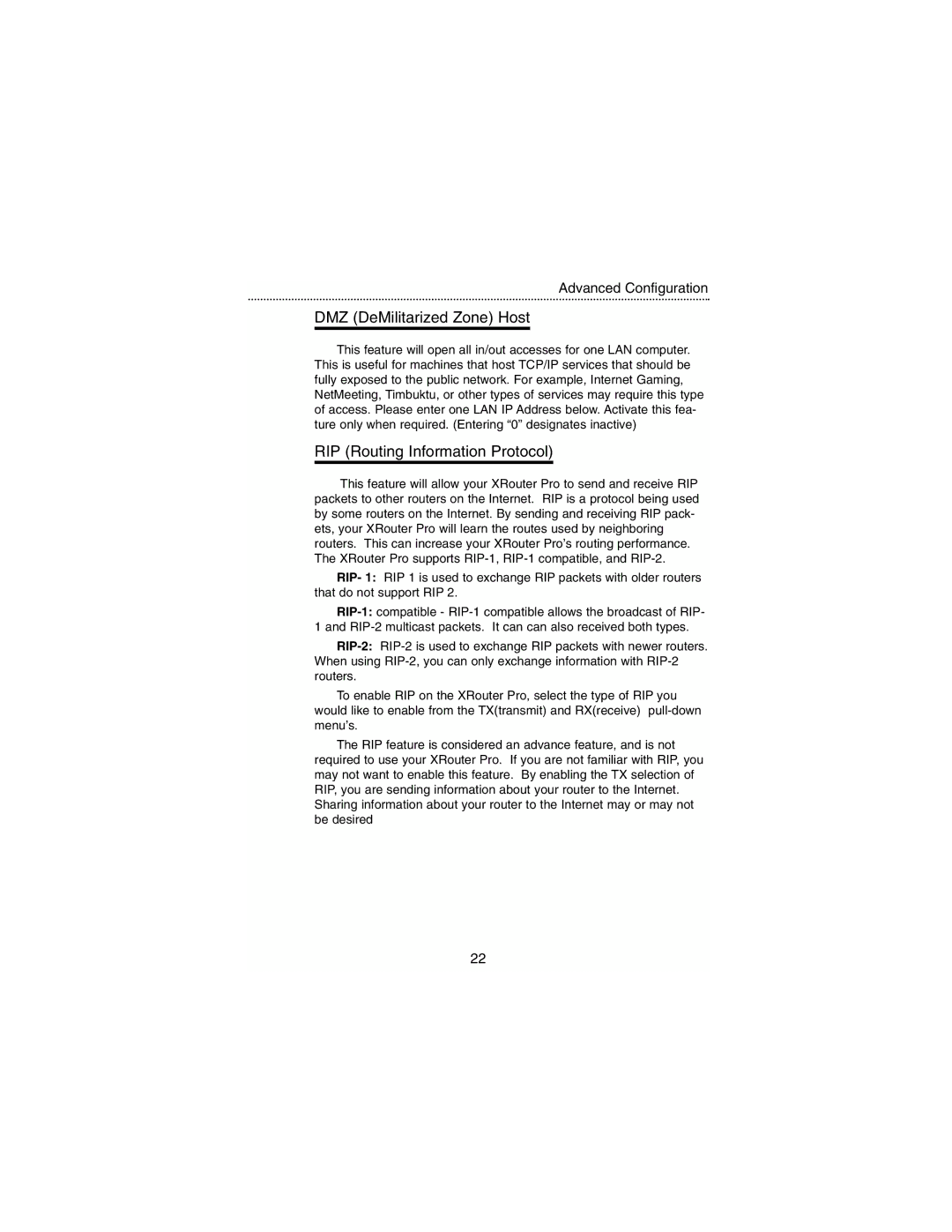Advanced Configuration
DMZ (DeMilitarized Zone) Host
This feature will open all in/out accesses for one LAN computer. This is useful for machines that host TCP/IP services that should be fully exposed to the public network. For example, Internet Gaming, NetMeeting, Timbuktu, or other types of services may require this type of access. Please enter one LAN IP Address below. Activate this fea- ture only when required. (Entering “0” designates inactive)
RIP (Routing Information Protocol)
This feature will allow your XRouter Pro to send and receive RIP packets to other routers on the Internet. RIP is a protocol being used by some routers on the Internet. By sending and receiving RIP pack- ets, your XRouter Pro will learn the routes used by neighboring routers. This can increase your XRouter Pro’s routing performance. The XRouter Pro supports
RIP- 1: RIP 1 is used to exchange RIP packets with older routers that do not support RIP 2.
To enable RIP on the XRouter Pro, select the type of RIP you would like to enable from the TX(transmit) and RX(receive)
The RIP feature is considered an advance feature, and is not required to use your XRouter Pro. If you are not familiar with RIP, you may not want to enable this feature. By enabling the TX selection of RIP, you are sending information about your router to the Internet. Sharing information about your router to the Internet may or may not be desired
22
